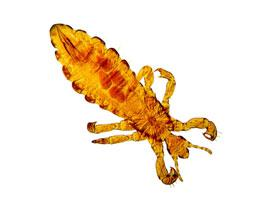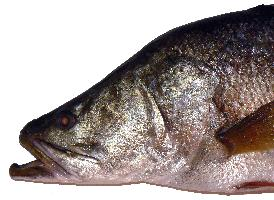
Biologická data
| Délka života | od 21 do 28 d |
|---|
Popis zvířete
The Crab Louse (Pthirus pubis), commonly known as the pubic louse or crab, is a parasitic insect notorious for infesting human genitals, although it can also be found in other areas with coarse hair such as armpits, eyelashes, and beards. This tiny parasite is a member of the order Psocodea and is closely related to the more familiar head and body lice, but it is distinguishable by its distinct appearance and specific habitat preference on the human body.Adult crab lice are small, measuring about 1.1 to 1.8 millimeters in length, making them somewhat challenging to see with the naked eye. They have a broad, rounded body that is somewhat crab-like in appearance, which is how they get their common name. Their color can range from a pale yellow to a darker brown, depending on their feeding status. A key feature of these lice is their large front claws, which they use to grasp onto the base of hair shafts. These claws are adapted to attach to the coarser hairs of the human body rather than the finer hairs found on the head, which is why they prefer regions with thicker hair growth.
The life cycle of the crab louse consists of three stages: egg (nit), nymph, and adult. The female louse lays eggs at the base of hair shafts, securing them with a glue-like substance that makes them difficult to remove. These eggs are oval and white, becoming more visible as they develop. After about 6-10 days, the eggs hatch into nymphs, which resemble smaller versions of the adults. The nymphs go through three molting stages before becoming fully grown adults, a process that takes about 2-3 weeks.
Crab lice feed exclusively on human blood, which they obtain by piercing the skin with their mouthparts. The feeding process often causes irritation and itching, which is a common symptom of an infestation. In some cases, the irritation can lead to secondary infections if the skin is broken from scratching. Additionally, the presence of crab lice can sometimes be indicated by small blue spots, known as maculae ceruleae, which are caused by the lice's saliva.
Transmission of crab lice primarily occurs through close physical contact, most often sexual contact given the lice's preferred habitat. However, it is also possible, though less common, for infestation to occur through shared bedding, towels, or clothing. Contrary to popular belief, personal hygiene has little to do with one's susceptibility to an infestation, as the lice are only interested in the presence of suitable hair to grasp onto.
Treatment for crab louse infestation typically involves the application of topical insecticides that are specifically designed to kill these parasites. It is also important to wash infested bedding, clothing, and towels in hot water to kill any lice or eggs that may be present. In cases where lice are found in eyelashes or eyebrows, special care must be taken, and a healthcare professional should be consulted for appropriate treatment options.
Despite their small size, crab lice can cause significant discomfort and distress for those infested. Understanding their biology, life cycle, and methods of transmission can aid in prevention, prompt detection, and effective treatment of infestations.
Podobná zvířata
Nové fotografie zvířat
Top 10 zvířat
- Dolphin gull (Leucophaeus scoresbii)
- Diana monkey (Cercopithecus diana)
- Stone loach (Barbatula barbatula)
- Greek tortoise (Testudo graeca)
- Japanese macaque (Macaca fuscata)
- Moustached guenon (Cercopithecus cephus)
- Galápagos tortoise (Geochelone nigra complex)
- Russian tortoise (Testudo horsfieldii)
- Galápagos penguin (Spheniscus mendiculus)
- Common flying dragon (Draco volans)


